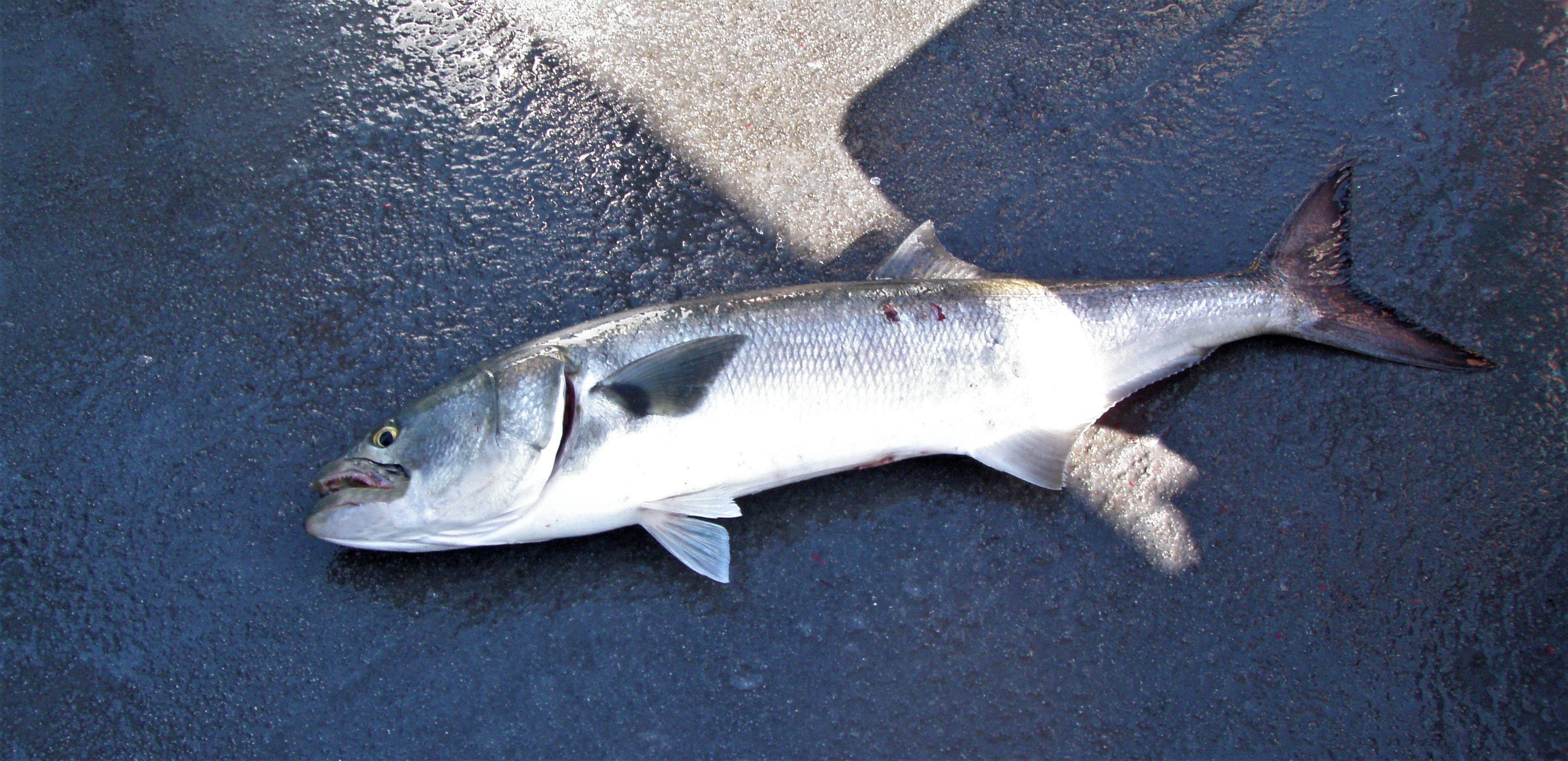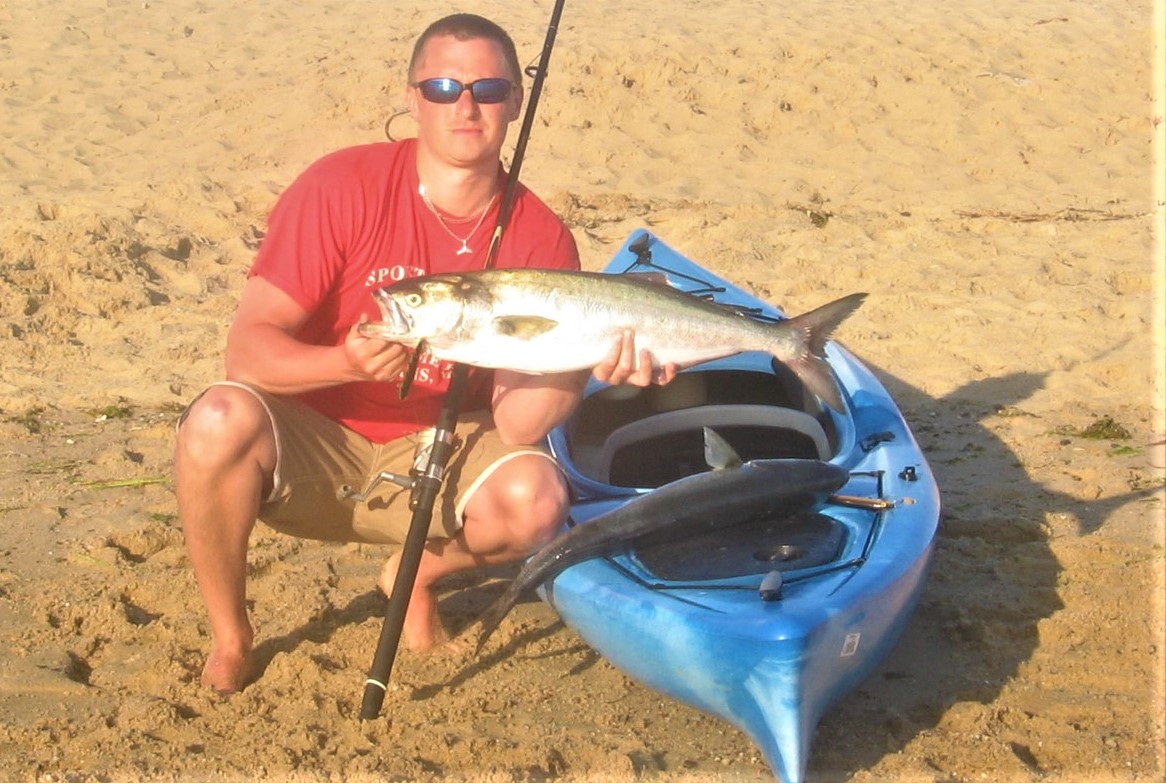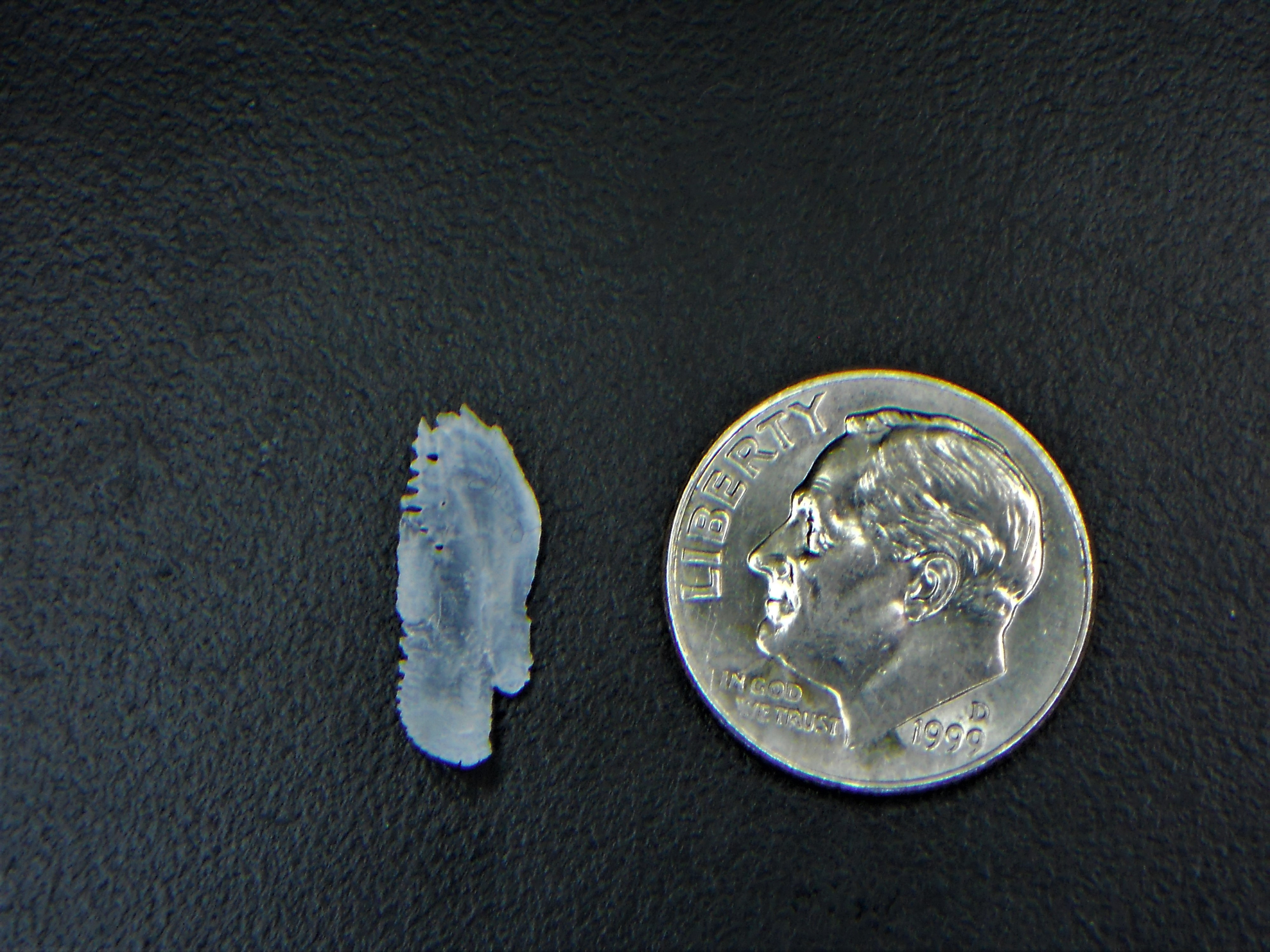Prey selection of two bluefish cohorts
Bluefish (Pomatomus saltatrix; Figure 1) is a highly predatory saltwater species found in most coastal areas around the world. Bluefish are opportunistic and voracious feeders that commonly prey on small forage fish such as menhaden, anchovies, and mackerel. They are known for their feeding frenzies, commonly known as a “bluefish blitz”, where they savagely attack schools of bait near the surface, ripping apart more fish than they actually eat. Though not commonly valued for their table fare, bluefish are popular among recreational anglers for their aggressive fighting ability.

Along the East Coast of the United States, bluefish migrate seasonally as water temperatures rise and fall. During the spring and summer, they make their way north and can be found from Cape Hatteras in North Carolina to the Gulf of Maine (Figure 2). As temperatures begin to cool in the fall, they migrate to their wintering grounds in the South Atlantic Bight between North Carolina and Florida.

Bluefish become sexually mature around two years of age and spawn multiple times throughout the year in offshore areas over the continental shelf. Juvenile bluefish are grouped by the season they hatch in. They produce a spring-spawned cohort (March through May) and a summer-spawned cohort (June through August). Bluefish commonly use estuaries in the Mid Atlantic Bight (between Cape Hatteras and Cape Cod, Massachusetts) as nursery habitat where they feed and grow until migrating south in autumn.
Bluefish have fast growth rates and juveniles can consume up to 40% of their body weight each day. Since bluefish from the spring cohort hatch earlier, they are larger and may compete with the smaller, summer-spawned bluefish for food. Dr. David Stormer from the University of Massachusetts-Amherst and Dr. Francis Juanes from the University of Victoria in British Columbia, Canada led a study to examine possible competition between the two cohorts of bluefish. The study was conducted in the Hudson River Estuary in New York, where the spring and summer cohorts overlap in late summer to prepare for their fall migration.
During the summer and early autumn of 2008 and 2009, juvenile bluefish were collected using a beach seine bi-weekly by the New York State Department of Environmental Conservation (NYSDEC). Back at the laboratory, the fish were measured, weighed, and assigned to each cohort using small calcium carbonate structures found beneath the fish’s brain called otoliths (Figure 3). Otoliths grow with the fish and a new layer is added every day in its first year. Scientists can determine the fish’s hatch date by counting the rings of the otolith. Subsequently, the stomach contents of each fish were also examined to find if the two cohorts were opting for similar prey species, and the energy level of each fish was examined by extracting the fat content from a small sample of muscle tissue. In addition, the scientists calculated the degree of habitat overlap or separation exhibited by the two bluefish cohorts during their cohabitation in the river.

Bluefish in the spring cohort were consistently larger and ate larger prey than fish in the summer cohort. The researchers found that both cohorts fed mostly on bay anchovies (Anchoa mitchilli), but the spring cohort preferred to feed on larger anchovies than the summer cohort. The spring cohort also fed on larger prey such as Atlantic silversides (Menidia menidia), banded killifish (Fundulus diaphanus), and juvenile striped bass (Morone saxatilis) during their time in the estuary. These differences in diet were likely due to mouth gape limitations. The spring cohort maintained their size advantage over the summer cohort by the time they left the river in both years of the study. However, although they ate smaller and less diverse prey, bluefish in the summer cohort had higher fat content than the older fish. This difference in fat content was likely to compensate for their smaller size as they prepared themselves for the fall migration to overwinter in the South Atlantic Bight.
Interestingly, the two cohorts occupied different sections of the river in both years, perhaps to reduce competition for food and/or to avoid cannibalism from the larger spring cohort on the smaller summer cohort, which has been observed in bluefish. Also, the spring cohort dominated the bluefish catches in 2008 and the summer cohort were the most abundant the following year, likely due to the annual difference in spring and early fall water temperatures. The results of this study indicated that the summer cohort selected for fat storage over growth prior to the fall migration. This tradeoff may make the summer cohort more vulnerable to size-selective predation once they move out into the ocean. Finally, the Hudson River estuary provided the conditions for the two bluefish cohorts to reduce competition demonstrating the value of restoring critical nursery habitat for juvenile fishes.
The cohort structure of the East Coast bluefish population has shifted over time. During the middle of the 20th Century, the cohorts contained similar numbers of fish. By the 1980s, bluefish from the spring cohort were more abundant. Now, summer-spawned bluefish have generally become more common, but this cohort has lower survival rates during the winter. With fewer fish surviving to adulthood, the East Coast bluefish population is in decline. Understanding the early life history of bluefish in Mid Atlantic Bight estuaries may help improve the management of the species and ensure that bluefish blitzes will not become a thing of the past.
Reference:
Stormer, D.G., and F. Juanes. 2017. Premigration patterns of growth, condition, and resource use by the spring-spawned and summer-spawned cohorts of juvenile bluefish in the Hudson River Estuary, New York. Marine and Coastal Fisheries: Dynamics, Management, and Ecosystem Science 9(1): 549–563.



